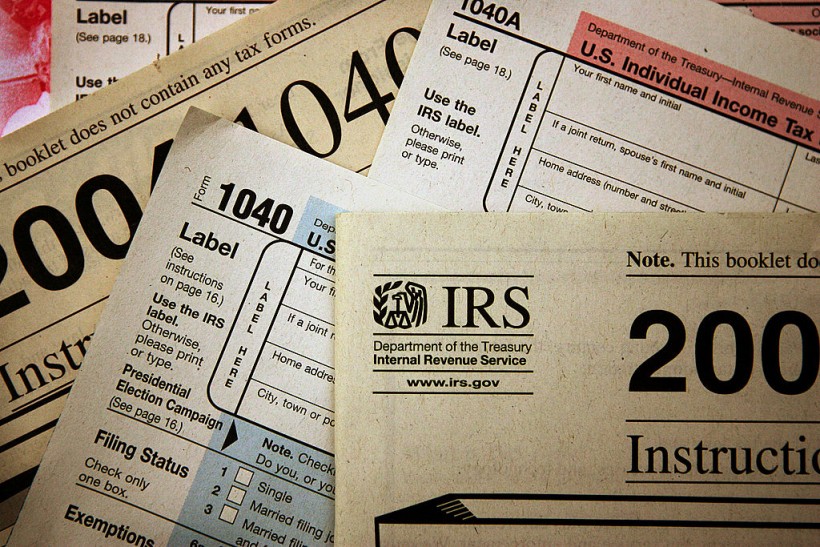
(Photo : Scott Olson/ Getty Images)
There are significant reasons why your tax refund in 2023 may be smaller, according to the Internal Revenue Service (IRS).
Americans who hope to extend the holidays through tax season may have to limit their expectations.
"Refunds may be less in 2023," the IRS stated in a November press release regarding future tax season preparations.
Smaller Tax Refund is Not Bad at All
While it may be upsetting that many households will not receive a sizable tax refund in 2023, here's why and what else you need to know before the filing season begins on January 24.
During the pandemic, the IRS issued several really substantial tax refunds. According to the IRS, the average tax refund for the 2022 filing season was $3,176, a 14% increase from $2,791 in 2021.
However, the federal government did not issue any fresh stimulus checks in 2022. In addition, several enhanced tax credits and deductions, such as those for charitable gift deductions and child care, have reverted to their pre-pandemic levels.
Per Yahoo, Congress enacted a new incentive to boost charity donations in 2020. Even if they did not itemize, taxpayers may claim up to $300 (or $600 for married couples filing jointly) for monetary gifts, however, this option was not renewed for 2022.
And families with children will notice a reduction in their child tax credit, as it returns to its pre-pandemic level of $2,000 per kid. In 2021, the maximum credit per kid was $3,600.
Thus, the days of excessive refunds are ended. In addition, smaller reimbursements may take longer to reach your bank account.
The tax department, which has experienced a manpower deficit for years, has also issued a warning that some returns would take longer to process. In an effort to prevent this, the IRS has issued a warning.
The first crucial thing to know about tax refunds is that you typically only receive them if you overpaid on your annual taxes or withheld more than you owe. This means that a refund is just the government returning money that was yours, to begin with.
The only exception is when you may claim a refundable tax credit for items such as heat pumps or child care. However, you are probably not a lender, so why would you want to provide the revenue agency with interest-free loans throughout the year?
This additional money might be put toward your financial objectives, such as paying off debt, creating an emergency fund, or investing for retirement.
Check your tax withholdings early in the year, recommends the IRS. Therefore, now is the ideal time to analyze your pay stubs and W-4 forms. Calculating whether or whether your company withheld too much will need some arithmetic. You must put together your withholdings for each pay period and deduct your anticipated tax due.
The difference is your prospective tax liability. If you need to change your withholdings after that, you must fill out a new form. If your tax situation is more complex or you don't know where to begin, you may want to see a tax specialist. Perhaps at this time next year, you will anticipate an even lower tax refund in 2024.
Because tax credits represent a dollar-for-dollar decrease of your tax liability, they serve as refund boosters more frequently than deductions. A $100 tax break is available if you earn a $100 tax credit.
The failure of many Americans to claim tax credits costs them money. If you are a college student or helping to support a child attending college, you may be eligible to claim useful education credits, as per Marca.
Read Also: Student Loan Forgiveness 2023: Should You expect Great News or Start Paying Your Debt Next Year?
Why You Should Not Get Your Tax Refund in Advance?
E-filing, setting up for a direct deposit, and filing early is reliable strategies to ensure that you receive your return on time (and without errors). Although the pandemic disrupted routine payout distribution procedures, the IRS typically issues tax refunds within 10 to 3 weeks of the filing deadline.
For some, the standard filing and refund-waiting procedure is too lengthy. Obtaining a tax refund advance or refund anticipation loan from a tax preparation business may appear to be a quick and simple method to obtain cash, but experts caution that these sorts of loans come with significant expenses and hazards.
Regardless of what a third party may refer to it a tax return advance is a sort of loan operated by a tax preparation business that offers a taxpayer access to a portion of their expected refund weeks or months before they would ordinarily file taxes with the IRS.
According to GoBankingRates, the upcoming tax return serves as security for the anticipation loan, which can range from $250 to $4,000.
The payback terms and costs for these advances vary based on the terms of the loan stipulated by the lender. If accepted, monies can be sent to the taxpayer within a few days or sooner, and the loaning corporation will be repaid when the tax refund is received. Lenders provide return loan advances beginning in mid-December and continuing through February.
Related Article: Want To Get Tax Refund Early? See These Significant Changes Before Filing Your IRS Return!
@YouTube









